Great Norwegian Mid-Century Designers 101: Fredrik Kayser and Rastad & Relling
Although the name references an entire geographical region, Scandinavian modern furniture is most closely associated with Denmark. Finland’s mid-century furniture designers have also received recognition--Alvar Aalto and Eero Saarinen in particular--and Bruno Mathsson of Sweden has made a few “top ten” lists. But there is another Nordic country whose design history has gone largely unnoticed: Norway. While not as renowned as its neighbours, Norway has a proud design legacy that we will look at here, through the works of Fredrik Kayser and the firm Rastad & Relling.
Norway, Funkis, and the Struggle to Be Noticed
Like the other Scandinavian countries, Norway embraced the modernist movement that took hold in Europe after World War I. In that era, a need for the “rationalization of space” was recognized, creating a demand for simpler and more efficient housing and furnishings. A functionalistic design movement, also known as Funkis, was born, but not in Denmark as one might expect. Rather, it first began in Norway and Sweden. (Quinn, Scandinavian Style, p. 26.)
Elizabeth Wilhide, author of Scandinavian Modern Home, defines the Funkis look as “streamlined, efficient, economical and practical ” and notes that it applied to architecture, furniture, and interior design. The Funkis movement survived the Second World War, but evolved and “mutated into a softer, more individually Nordic style without losing its essential clarity or simplicity.” (Wilhide, p. 14)
By the 1950s, North Americans had taken notice of Scandinavian design, but the distinctions between the various Nordic countries had become blurred. In 1954, an exhibition called “Design in Scandinavia” toured North America. It included pieces from all Nordic countries but lumped everything under the rubric of “Scandinavian” design. In so doing, the exhibition established the notion of a singular, generic Scandinavian style “to the bewilderment of the designers” who believed each country possessed its own, unique design aesthetic. As Bradley Quinn writes:
“...the aesthetic principles of minimalism, clarity, understated stylistic features and naturalistic beauty are generally present in most of the Nordic decorative traditions, but the treatment of materials and the artistic élan vary widely from country to country.” (Quinn, p. 9)
The "Design in Scandinavia" exhibit proved very popular and, through heavy media coverage, influenced Americans looking for something new and fresh for their homes. Demand for “Scandinavian” decor increased, and department stores responded. Quinn notes, however, that stores followed the “tastes of the exhibition curators more than the design output of the Nordic nations.” (Quinn, p. 122) As far as furniture, the exhibition featured mostly Danish designers, causing “Danish” and “Scandinavian” to become synonymous in the minds of North American furniture shoppers. As a result, Danish furniture experienced an explosion in popularity that did not extend beyond its borders.
Danish designers certainly earned their stellar reputation and had not sought to outshine their neighbours. But, for a long time, furniture with the “Made in Denmark” label had a much broader appeal than anything produced in the other Scandinavian countries.
Norway, whose industries had struggled mightily after the war, became something of an afterthought during this period, known more for handicrafts and metalwork than furniture. Yet there were many award-winning furniture makers working in the country in the mid-century era. They have been highlighted in recent years by Oslo-based vintage furniture dealer Peppe Trulsen who, along with his partners, created a travelling exhibition and website of Norwegian design icons. Speaking with The Japan Times, Trulsen noted that his exhibition of vintage items includes 34 that won international gold medals, from designers who were contemporaries of Danish legends like Arne Jacobsen and Hans Wegner. In short, Norwegian designers could hold their own. Among these designers are Fredrik Kayser and Rastad & Relling, who serve as excellent examples of the country’s rich design legacy.
Rastad & Relling
Rastad & Relling, a firm that still exists today, opened in 1943. Founded by architects Rolf Rastad and Adolf Relling, the company was known for hiring young graduates of Norway’s National Academy of Craft & Art Industry and serving as an incubator for the country’s postwar furniture designers.
One of the firm’s most well-known designs is the Bambi series of chairs. Manufactured by Gustav Bahus Eftf., the chair came in many variations. The examples below include the dining chair and armchairs in cane and leather.
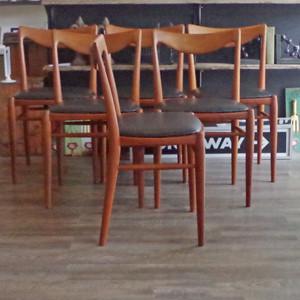
Bambi dining chair. Image from VHB. (Item no longer available.)
Rastad & Relling Bambi Chair in Leather. Image from 1stdibs.
Rastad & Relling Bambi Chair in Cane. Image from Design Addict.
Beyond chairs, the company also crafted unique tables and sideboards, each showcasing the efficiency and versatility associated with the Funkis movement and mid-century modern design. The side or sewing table shown here won first prize at the 1962 Norwegian Design Competition:
Rastad & Relling Side or Sewing Table. Images from 1stdibs.
The graphic sideboard, also made by Gustav Bahus, shows yet another unique design that offers smart, efficient use of space.
Rastad & Relling Graphic Teak Sideboard. Images from 1stdibs.
The firm’s reputation grew as it become involved in many prestigious projects. In 1947, Rastad & Relling was hired to design the interior of the upper deck smoking lounge on the royal ship Norway. In the 1950s, it was selected to design furniture and fixtures as part of an expansion and redesign of the Norwegian Parliament. The project was led by Adolf Relling and involved several designers, including Fredrik Kayser. Along with Relling, he created the firm’s “first design classic,” the “Kaminstolen,” shown below. (snl.no: Fredrik Kayser, Rastad & Relling)
Image from Imgrum.
The Kaminstolen would later be modified and used in Rastad & Relling’s Parliament commission. It can be seen in the image of the building’s main entrance, below. It differs from the original in its size and thicker cushion:
Image from Rastad & Relling.
Rastad & Relling also employed designers who would be recognized for their individual talents, including Sigurd Resell and Arne Halvorsen. It did not, however, go out of its way to draw attention to these individuals, preferring instead that designs created within its walls be given the company name. (snl.no.) In the 1970s, the firm expanded to provide architectural services and has worked on a wide range of projects, including living quarters on North Sea oil installations. (Rastad & Relling)
Fredrik Kayser
Fredrik Kayser was born in 1924 in Bergen. His parents owned a furniture business and Fredrik took up the family way of life early. He apprenticed as a carpenter and had his first chair produced at the age of 15. (Pamono.ca) He later studied at the National Academy of Craft & Art Industry.
His family was very musical and Kayser, who played both the cello and mandolin, was said to have been inspired by music when designing furniture. (Vatne Mobler) He joined Rastad & Relling after graduating from the National Academy in 1945, and made an immediate impact with his work on the Kaminstolen, seen above.
Kayser left Rastad & Relling in 1946 to launch his own company. He did not succeed on his own and returned to the firm in 1952. He stayed until 1956 when he once again left to establish his own design studio. (Pamono.ca) It was during his second stint with Rastad & Relling that Kayser created one of his most famous designs, the Krysset or Cross chair, so named because of its cross-shaped legs:
Image from 1stdibs.
After opening his own studio in 1956, Kayser worked as a freelance designer for various Norwegian furniture manufacturers, including Vikens Mobelfabrikk. The Hertug sideboard was one of his more well-known designs for the company:
Hertug Sideboard. Images from Sweden Antiques.
Kayser also worked with Vatne Lenestolfabrikk. His first design for the company was the Model 550 sofa, shown below:
Kayser Model 550 Sofa. Image from 1stdibs.
At Vatne, Kayser proposed a series of “knock-down models; ” that is, furniture that could be easily packed, shipped, and assembled. A profile from Vatne recalls a 1958 export trade show in Helsingborg which featured the new designs. Rather than go with standard colours, the company took the advice of a fabric designer and showed its new collection in black and white. The company feared it would be too bold a look, but it worked. Their designs stood out from the crowd and created interest from retailers around the world. (Vatne Mobler)
At Vatne, Kayser created some of his most celebrated designs. Among them were his 965 and 807 series, shown below in the sofa and armchair versions. Both are still being produced by Vatne today:
Kayser had many other notable designs. His stunning Model 599 rocking chair is included in the collection of the National Museum of Norway:
Image from nkl.snl.no.
Kayser’s 711 Series won first prize in the Industry Council for Furniture and Furnishing Industry chair competition in 1960. The chair has such an outsize reputation that it is being made again by Hjelle, with the permission of Kayser’s widow who worked with the company to ensure they “stayed true to her husband’s high standards.” (Design Within Reach)
Image from 1stdibs.
His Model 108, also made for Vatne, won an Award for Design Excellence in 1968 and was recognized at the Collection Price Furniture Fair in Oslo in 1983. In an interview on the Vatne website, the company’s Knut Sæter recalls Kayser’s pride in the Model 108; the designer thought it was his best work yet. It is shown below in rosewood.
Kayser Model 108. Image from Pamono.co.uk.
After a brief illness, Fredrik Kayser died in 1968 at the age of 44. In 1985, Norwegian interior designer Trinelise Dysthe was asked about Kayser. She believed that his love of music was reflected in his designs, which were “almost musical in form.” Continuing on that theme, she said he most closely resembled Mozart for his “clean and clear elegance.” Dysthe concluded by noting that, while Kayser was inspired by Danish designers, he imbued his furniture with his own unique style, creating pieces that are now considered classics in Norway’s furniture story. (Vatne Mobler)
Indeed, Kayser’s designs--and those of his fellow Norwegians--have gained greater international recognition. They are now commonly seen in vintage shops where they command prices in line with other Scandinavian design greats. We have had some rare pieces at VHB, including chairs by Rastad & Relling and a dining table by Gustav Bahus. Our current collection includes a Burmese teak shelving unit by Norway’s Torbjørn Afdal, pictured below. He is recognized as one of the most prolific and well-respected designers in postwar Norway, and his designs were collected by US First Lady Jacqueline Kennedy for the White House, Japan’s Emperoro Hirohito, and the Norwegian Prime Minister Gro Harlem Brundtland. (Nomanordic)
Bookcase by Torbjørn Afdal. From VHB's collection.





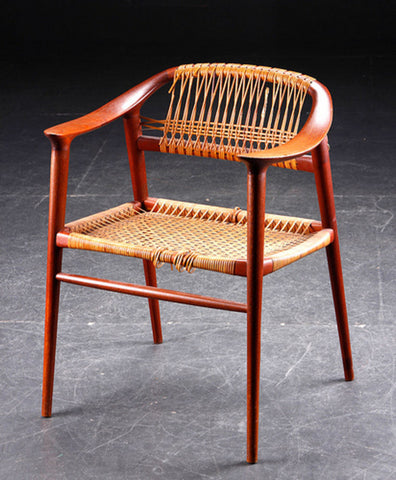

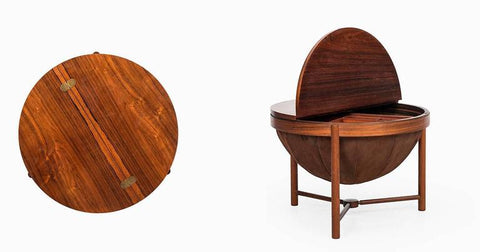
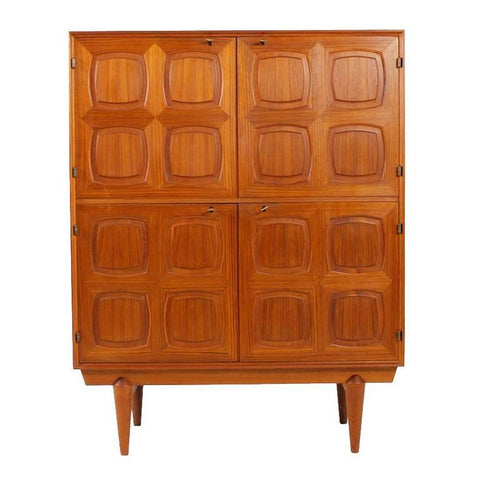
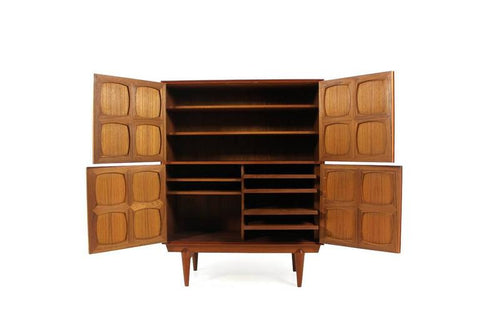
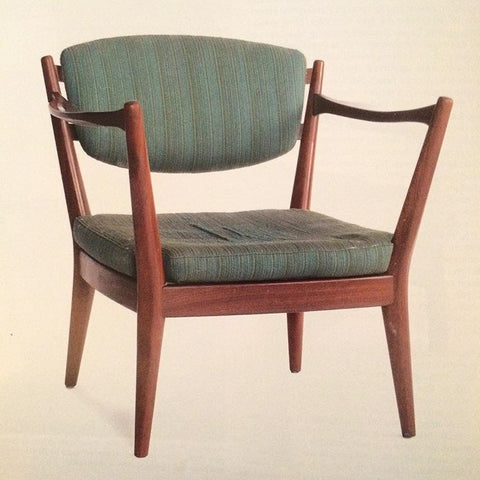

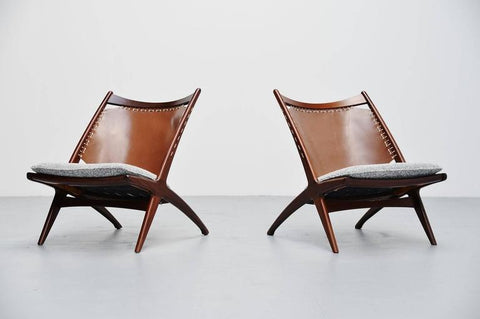
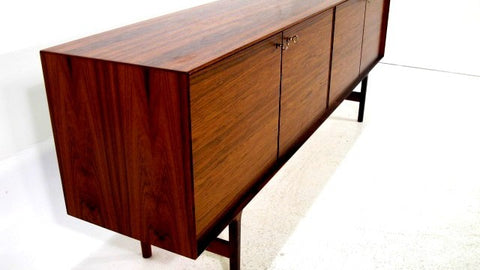
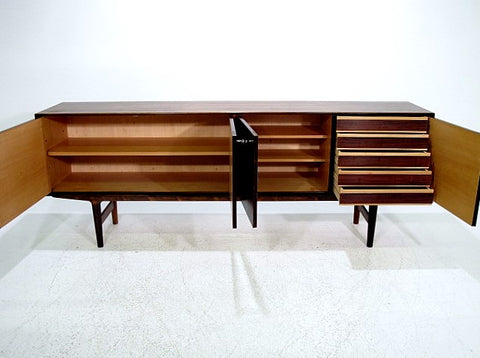


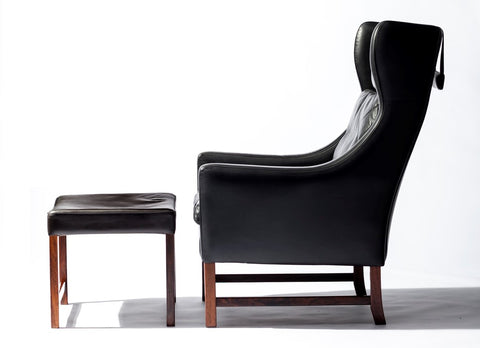

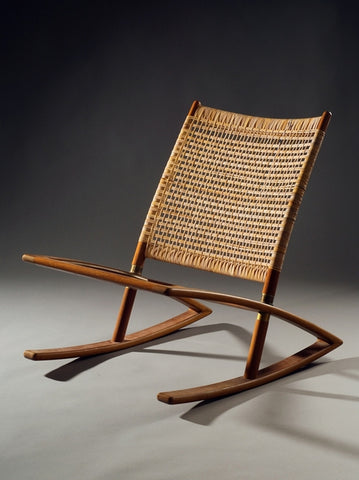

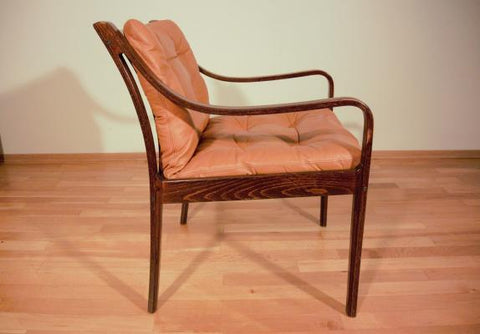
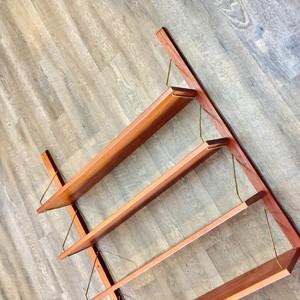
Leave a comment